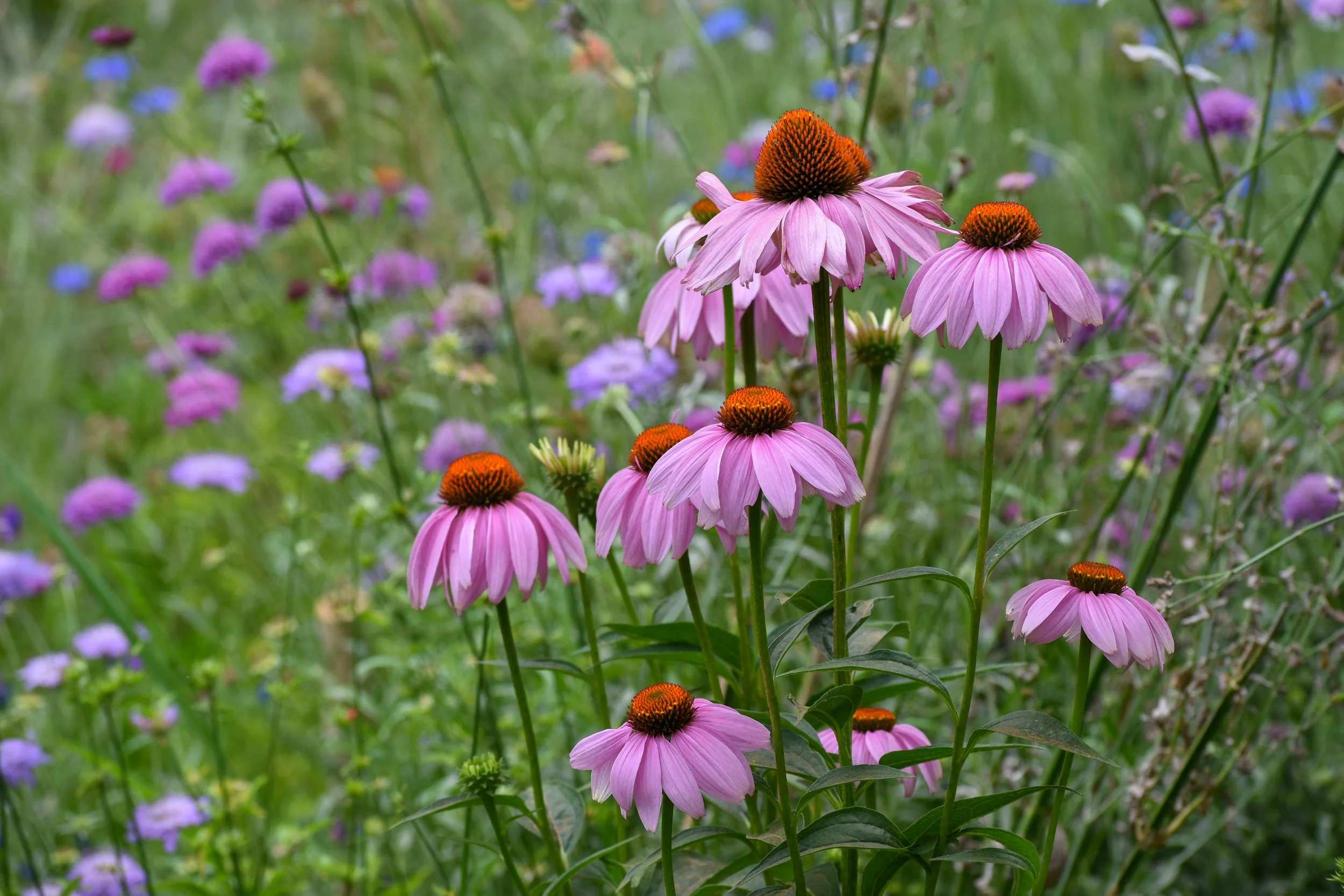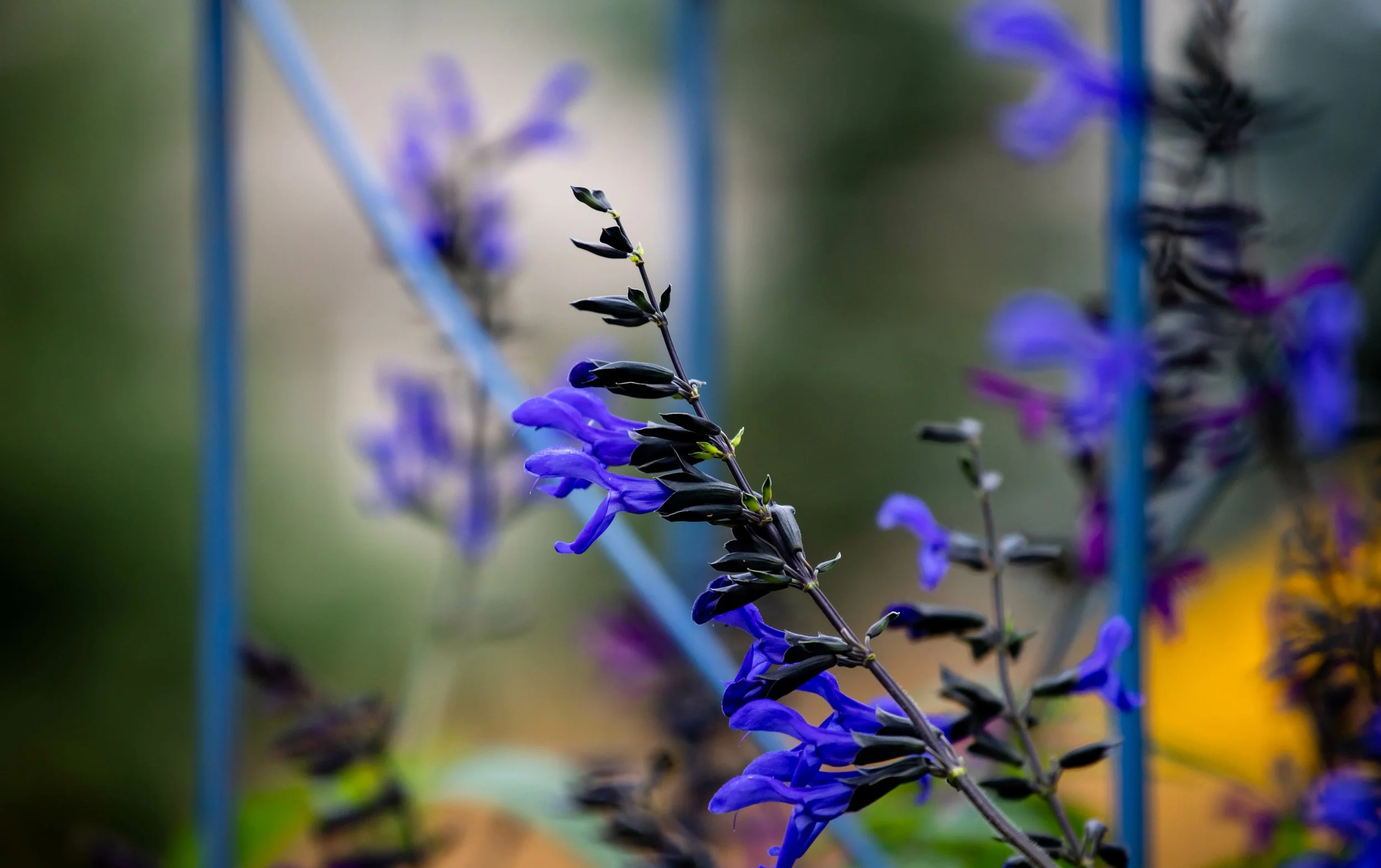Gardening for Pollinators - Part 1
Wildflower meadow with Echinacea purpurea, the purple coneflower by Chris Peters
If you are reading this series of blogs, you have either heard the term “gardening for pollinators” and wish to learn how this style of gardening differs from other types, or you are already engaging in attracting pollinators and are happy to gather additional recommendations.
TERMS
A pollinator is an animal or an agent that moves pollen from the male part of a flower (anther) to the female part of the same or another flower (stigma). Pollinators include but are not limited to: Birds, butterflies and moths, bees and wasps. A garden that invites pollinating species of birds and insects never utilizes pesticides and encourages biodiversity.
Many gardeners turn to Indiana native plants since they offer low-maintenance, wildlife–friendly landscaping for the modern gardener. Lists of Indiana native plants and their cultivars are widely available and Dammann’s is committed to providing reliable perennials, herbs, trees, and shrubs to fill this demand. Indigenous plantings have a high survival rate when sited properly; they’ve survived without much assistance for thousands of years! In addition, native plant species support native insect species, especially important for establishing bird and butterfly habitat. The native garden is no less beautiful, colorful or fragrant than traditional landscaping and can be designed with simplicity or sophistication according to style preferences.
The “natives only” purest will choose only native species, (a plant that evolves without cultivation or hybridization), while others will include native cultivars (a plant selected for a certain trait; such as flower color, foliage color, fruit color, shape, size, pest resistance, etc. Cultivars are cloned selections resulting in loss of genetic diversity.), and native hybrids (a plant created by cross breeding two or more entirely different species (or rarely, different genera) to create a new plant. Hybrids occur in nature and also via intentional cross breeding by people. Also known as nativar.
The decision to include non-native varieties in the garden is a matter of choice and is totally acceptable, and there may be good reason. Dammann’s highly recommends including ’Black and Blue’ Salvia for its ability to attract hummingbirds. Their large tubular flowers are an excellent nectar source.
Black knight salvia, a beautiful cobalt blue four foot tall salvia mixes nicely with by MOLLY SHANNON
Attracting pollinators includes the best plants for the pollinators you want to attract while providing for their other needs as well.
BEES
It is common knowledge that bee populations are in decline. Bees are responsible for pollinating fruiting trees and many plant varieties in the kitchen garden. It is possible to attract bees in a significant way to your garden by providing a continuing nectar source. This takes a few yearly cycles to ensure there are no gaps as plants cycle in and out of flower. Until then, no worries, bees will travel some distance to obtain nectar.
Grow flowers that attract bees. Bees are especially drawn to blue, white, yellow, and purple flowers, but even more, bees are attracted to scent. Let some herbs come into flower.
Provide drinking water for bees at a birdbath by placing a stone in the water for perching. And finally, shelter; 75% of all native bee species don’t live in hives but are “solitary” so build or buy a bee box. These enclosed structures can provide certain honey bee species a man-made home in which to live, store food, and raise their brood.
By Dottie Wright
Bee and Butterfly houses found at Dammanns Garden Company



